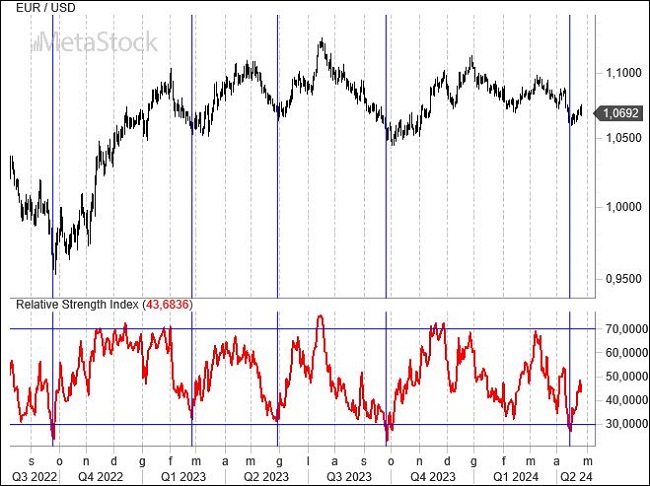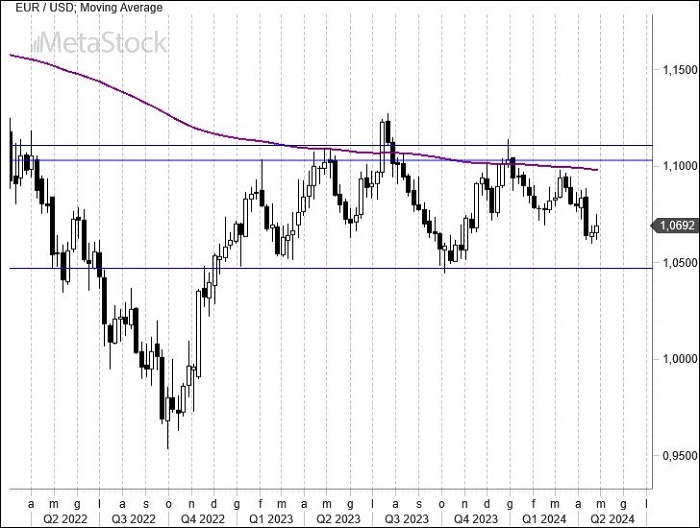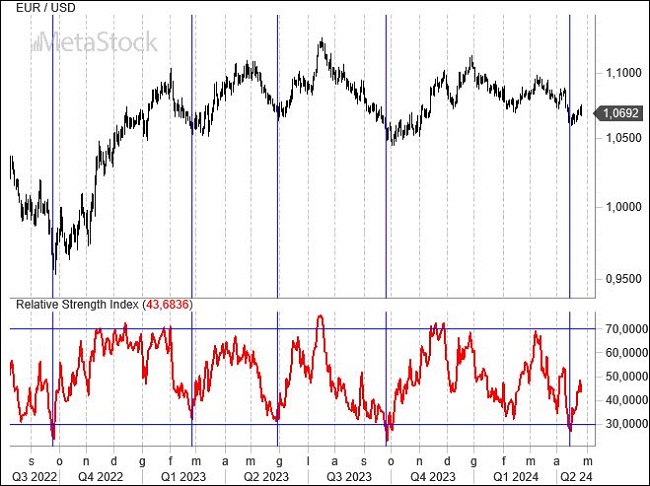- Markets have seemingly resigned themselves to a Federal Reserve on hold for nearly all of 2024. However, any negative macroeconomic data is still welcomed, as it might encourage a U-turn from Powell and company on interest rates. Yet, if negative data coincides with an inflation spike, the nightmare of stagflation contorts market sentiments.
- Christine Lagarde continues to bide her time, whispering to investors that June will be a pivotal month for interest rates. Meanwhile, European macroeconomic data is beginning to show signs of improvement, fueling uncertainty about monetary policy.
- Once again, the EurUsd has demonstrated its strong ability to hold support around the 1.05 level, consistently repelling assaults from the greenback.
Interest Rate Strategies Amid Economic Shifts
Markets have a fairly clear idea of what should happen with interest rates. The ECB might cut rates once or twice in 2024, with the first move expected in June, while the Fed might only adjust monetary policy by late 2024 if inflation slightly recedes from current levels and economic growth weakens. PMI data indeed began to show some uncertainties in the U.S., while, surprisingly, they started to improve in Europe.
The U.S. GDP data for the first quarter notably caused tension. Not only did it come in significantly below expectations (1.6% versus an expected 2.5%), but core inflation spikes to 3.7% (versus 3.4%) rattled the stock markets over fears of stagflation.
Both Powell and Lagarde face challenges in managing monetary policies that will inevitably affect their respective currencies’ valuations. A perfect example is Japan. Despite the Bank of Japan’s removal of the zero-interest-rate policy in March, the yen has been hammered by sales, dropping to lows not seen since the 1990s. The reason? The growth in Japanese yields has been insufficient compared to rising U.S. Treasury rates, making U.S. government bonds (and thus the dollar) more attractive, continuing to exploit the yen as an ideal currency for carry trades.
The euro’s recovery in this sense appears to be a sign that the monetary policies of the Eurozone and the U.S. might not diverge as much, especially since Germany, once the powerhouse of Europe, seems to indicate a recovery that is not overwhelming but noteworthy as evidenced by the IFO index.
Technical Analysis – EurUsd and the Crucial Role of Support Levels
The scenario of an oversold EurUsd, as seen last week, persists. The RSI indicator in its classic daily version seems indeed to prelude a reaction of the exchange rate right at the 1.05 support level, which we identified as crucial for the euro’s stability. This consideration must be taken into account in a scenario where EurUsd does not interrupt its sideways phase that has been characterizing the exchange rate since the beginning of 2023. In case of a breach below 1.05, a classic head and shoulders bearish pattern would be formalized, with prospective consequences for the euro that would then feed particularly heavy bearish expectations for the European single currency. But this scenario does not seem likely at the moment.

There’s always the 200-day moving average acting as a demarcation between a sideways phase with 1.05 as the lower base, and an unexpected rally that is important for the future of the euro markets. Surpassing the 200-day moving average (currently around 1.10) is not new for EurUsd, having attempted it unsuccessfully twice in 2023. Succeeding in this endeavor would open up decidedly new prospects for traders and investors, possibly leading them to cover a greater risk of the U.S. dollar exchange rate. This scenario has so far not been considered by any analyst, but is not to be discarded outright.



Leave a Reply
You must be logged in to post a comment.